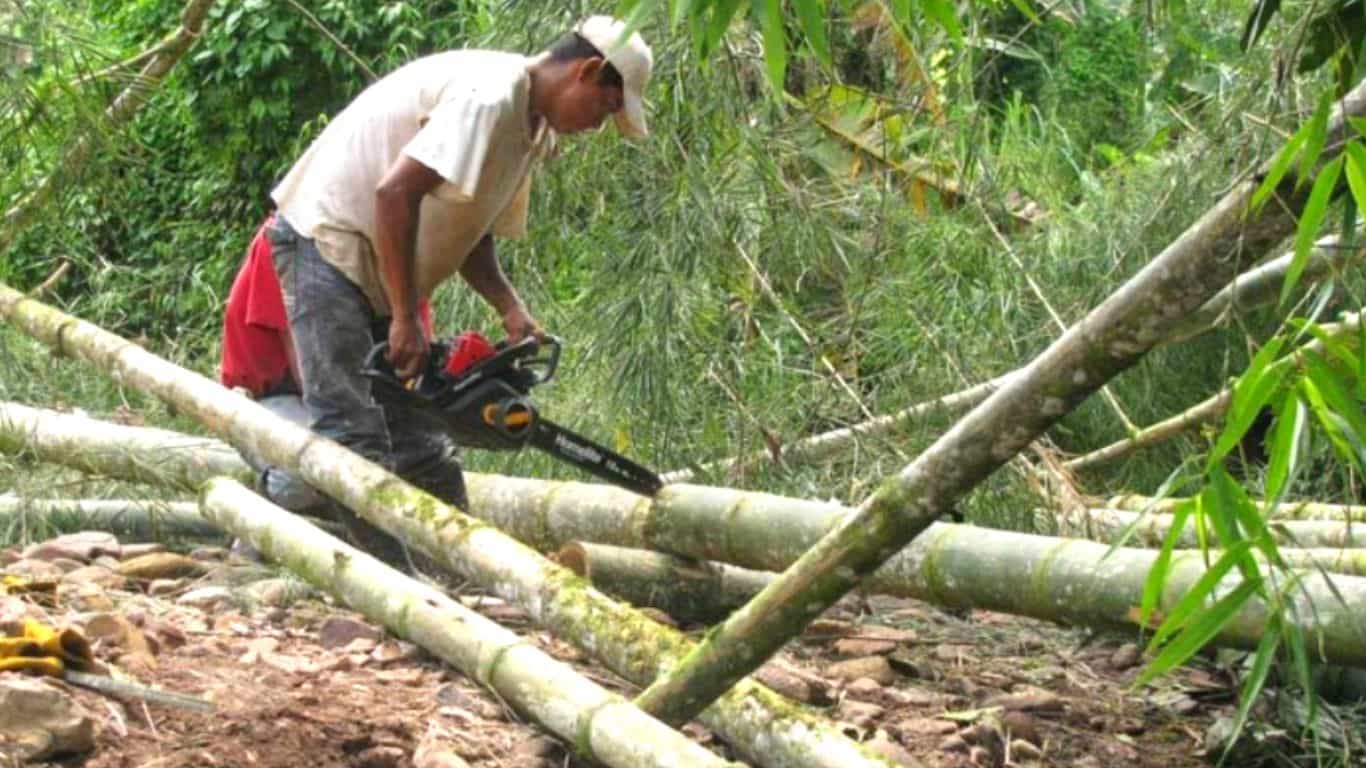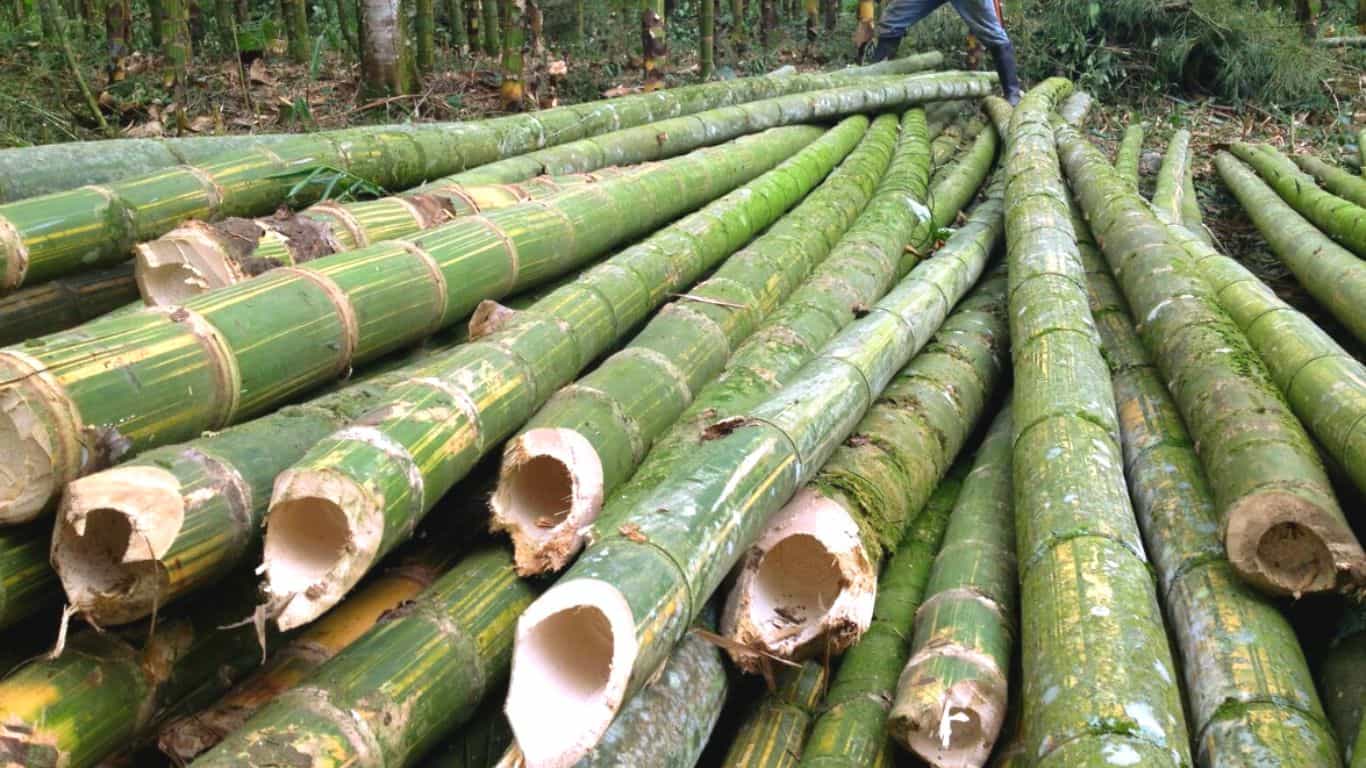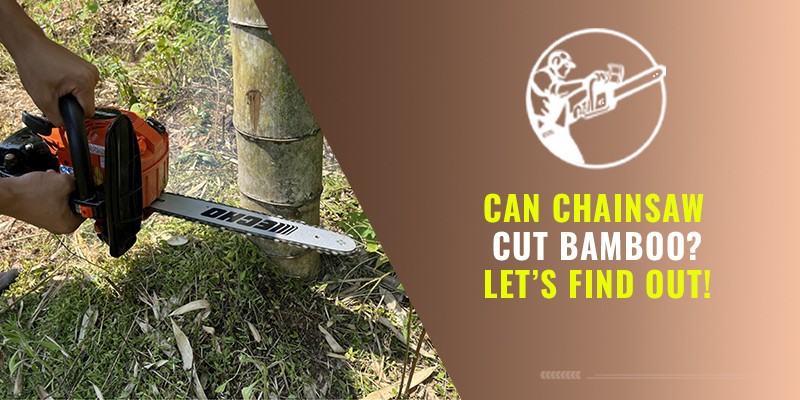Yes!! Chainsaws do cut bamboo. Although bamboo is a lot different from wood, people do use chainsaws for cutting bamboo.
You might be wondering why to cut bamboo with a chainsaw? Well, because it’s pretty much strong and hard very much like some wood. In fact, bamboo, combined with wood like plywood is used in making furniture as well. And so, it needs something sharp as a chainsaw to be easily cut.
Cutting bamboo with chainsaws isn’t too difficult. However, there’s silica present inside bamboo and you should be careful when cutting it because it might splinter off. Otherwise, chainsaws do not have a hard time with bamboo.
Our article would further guide you through the cutting, climbing, and felling of bamboo using chainsaws. Continue reading!
Is Chainsaw a Good Tool for Cutting Bamboo?
Chainsaws are great for cutting bamboo but with the right techniques and suitable blades only. A usual chainsaw chain won’t work for cutting bamboo because they are to be used on softwoods.
There are a few things to keep in mind when cutting bamboo. First of all, due to bamboo’s strength and fibrous nature, it will quickly dull your saw blade. Secondly, Bamboo stems have hollow culms (the main stems) that can possibly damage your saw blade if you by any chance strike the ground or other objects while cutting them.
So, to avoid this, remember to always operate a chainsaw safely and use caution when cutting bamboo.
Just in case you’re wondering what other tools could be used for cutting bamboo, it’s either the hacksaws or hand saws.
Initial Safety Precautions when Cutting Bamboo with a Chainsaw
Here are some safety precautions we’d like you to take for a safe cutting experience with bamboo and chainsaw.

- Wear chainsaw gloves, ear protection, goggles, and chainsaw boots to prevent injuries.
- Ensure that your blade is as sharp as possible.
- When cutting bamboo, place it on a raised flat surface.
- It is not advisable to cut bamboo when it is wet.
- The point where you want to cut bamboo should be wrapped with tape as it would prevent splintering.
- Ensure that the bamboo is clamped down securely before cutting it into pieces. Otherwise, it might not stay in place and roll away, which could be injurious.
- When cutting bamboo, it is preferable to do so in an open area. Keep it away from wires and other hazards when cutting it.
- Overextension of the arms can strain your muscles so, do not do that.
- Lastly, always hold your cutting tools firmly.
Felling, Limbing, and Bucking Bamboo with a Chainsaw!
People use chainsaws for felling, climbing, and bucking the bamboo. Bamboo 12 inches thick can be cut with a powerful chainsaw.
Let us explain how you deal with each of these using a chainsaw.
FELLING A BAMBOO
Felling basically involves cutting wood or bamboo from the base. So when u fell a tree or bamboo, it falls its entire height and at times, it could be risky as well. In the case of felling bamboo, the risk is it splinters into pieces so you must be careful.
To feel a bamboo, masking tape should be applied to the base where the cut will be made. Doing this will keep bamboo in place. Then start using the chainsaw on it. Make a 45-degree cut right where the masking tape was applied.
Small and medium-sized culms can also be felled with chainsaws, as well as with loppers or an axe. You can slice the base with a bypass lopper or use an anvil lopper to rip through the center. If you are felling bamboo of different sizes, you can also use a chainsaw and lopper together. Use masking tape to secure the base if you are only using loppers.
LIMBING A BAMBOO
Limbing is different from felling. It involves cutting off branches or limbs. You should start at the ground and work your way up when limbing a bamboo. Make a horizontal cut from the opposite side of the place where you are.

Remember, bamboo should be placed flat when limbing or bucking because the material can be cut more easily this way. Whenever you are trying to cut a limb, you should not extend yourself as this could lead to injury.
BUCKING A BAMBOO
Now bucking means cutting a fallen tree or bamboo into pieces. After felling and limbing, the next step is to cut the log of wood bamboo into smaller logs, this is called bucking. There isn’t must risk in bucking as the tree had already fallen but you still need to be careful because you’ll still be using a chainsaw.
We recommend using a clamp for bucking a bamboo as it would keep it in place. Also, because bamboos are different from trees, your chainsaw would behave differently. And so, you must keep in view how your blade works through the bamboo.
To be safe you can make a cut just deep enough to reach the hollow point. Then you make another, a deeper cut above this one and let the bamboo fall.
Uses of Bamboo when Its Cut Down
Bamboo is used for a variety of purposes and the most common ones are as follows:
- Depending on the variety, Bamboo can grow up to 96 feet tall and 12 inches wide. It is one of the most popular woodworking materials. When tested for strength, it is much stronger than red oak and so, it is commonly used in furniture with plywood.
- Your garden can benefit from its use. Your soil can benefit from bamboo’s organic matter and weed suppression ability.
- Plant your garden in a raised bed. You can use the stalks as bed posts.
- It is also possible to construct trellises or other types of support for climbing plants. Bamboo is an ideal material for this because of its fibrous nature.
- The purpose of cutting bamboo is to propagate it quickly and easily. The material is used both for propagation and for household items, replacing timber and plastics.
- The cut bamboo can be woven together to create a windbreak or privacy screen.
- It is suitable for use as fuel for bonfires and barbecues. Using bamboo as a cooking tool over an open flame is ideal due to its high heat content.

Some Tips when You’re Cutting Bamboo
I haven’t been much into cutting bamboo with chainsaws, but I have been doing it for some time and based on my personal experiences, I’d be sharing some tips that are going to be very helpful for you.
- Wrap bamboo sticks in duct tape. Sap or debris will not fly out between the sticks this way. This will result in a fine cut since the bamboo sticks will remain in place.
- Always use a sharper blade. Otherwise, you will have a harder time getting through the tough exterior when you have a dull blade, and you will also end up with a rough cut. Also, after use, sharpen the blade before storing the chainsaw.
- The bamboo should be dried in the sun completely to get the best results. Else, you will have a difficult time cutting wet or damp bamboo. Water is easily absorbed and retained by bamboo and so, despite being dry on the outside, there is still a possibility that the hollow part is damp.
- Pruners can be used if the bamboo is around an inch thick. If the bamboo is thicker than 12 inches, heavy-duty loppers will be needed, while for bamboo larger than 12 inches, a chainsaw or handsaw will be needed.
- Various products can be used to lubricate bamboo, including mineral oil. Cutting becomes easier and smoother with this.
- It is always a good idea to cut bamboo at room temperature. Splintering is reduced at this temperature.
- Bamboo should never be felled in the rain. In most cases, you can use a chainsaw in wet conditions, but cutting bamboo in the rain is not recommended. There will be no damage to the chainsaw, but it can pose a risk, especially when dealing with large bamboo.
- The hardness of bamboo should not be underestimated. Especially if the chainsaw chain is thick, it can wear out quickly. When bamboo is thicker, the blade, engine, and chain must be more powerful.
Can Chainsaws Cut Bamboo – FAQs
Conclusion
Using a saw to cut through bamboo stalks is the best option, but you can also use a hatchet or machete. The knife should also work well if you’re working with thinner bamboo. Make sure you use sharp tools, no matter what you use.
A dull blade will only damage bamboo rather than cut it cleanly because bamboo is extremely hard. Whereas if you use a sharp blade, slicing through bamboo stalks should be no problem at all!
We hope we’ve been helpful to you through our article.




